How To Identify 2 Common Early Spring Wild Edibles: Henbit and Purple Dead Nettle
The following article is meant for educational purposes only. The writer strongly encourages any individual considering foraging on their own to check with a local expert who is knowledgeable about wild edibles and their dangerous look-alikes in your specific area.
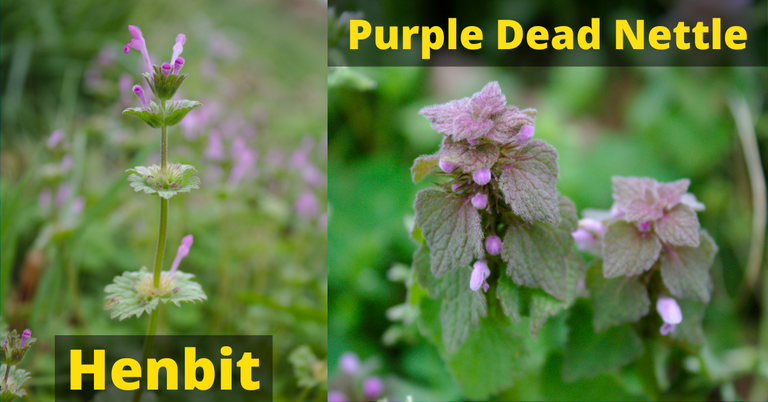
Henbit vs. Purple Dead Nettle
If you’re looking at getting into wild foraging or natural medicine, early spring is the time of year to start! This is when some of the best forage fodder starts popping up. In this article, we will be discussing how to identify two great options for beginners to get out and start collecting: purple dead nettle and henbit.
Identification
You can see from the above picture that there are some striking similarities between both of these plants. Both are part of the mint family (Lamiaceae), so they have square-shaped stems, similar flowers, and somewhat similar looking leaves. As such, they are often confused for one another. Luckily, they are both edible, so if you happen to make this mistake, it won’t be a lethal one. But my hope is that after reading this article and seeing the detailed images provided, you will easily be able to tell these wonderful “weeds” apart.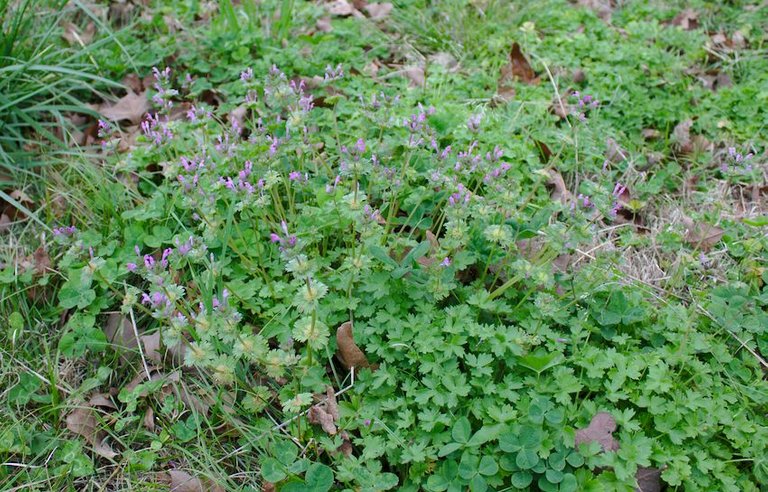
Henbit (Lamium amplexicaule)
Let’s start with henbit. Henbit is considered a winter annual, meaning that its seeds germinate in the fall, the plant lives through winter, produces flowers and seeds in the spring, and then dies away. It has a fibrous root system that grows out from a shallow taproot and can grow as tall as 16 inches (~40 cm).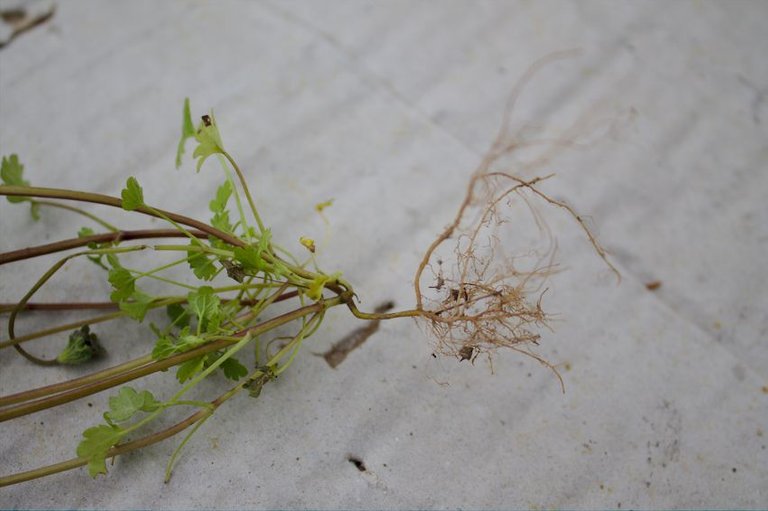
Stem and Leaves
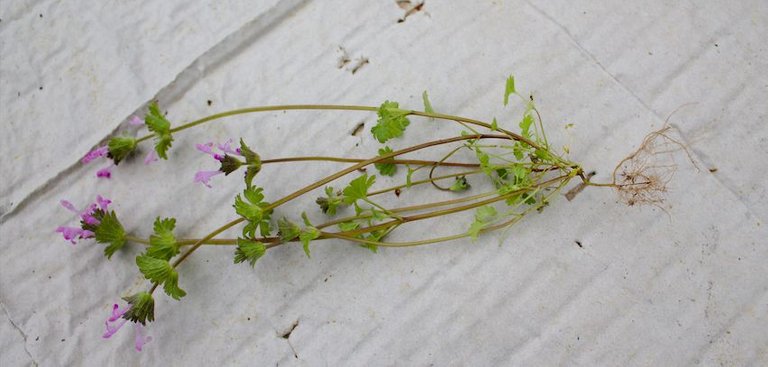
The square shaped stem of henbit is slightly fuzzy and sometimes green, but often takes on a reddish or purplish hue.The leaves are also slightly fuzzy and have an overall roundish to heart or kidney shape and have deep lobes that look like rounded teeth. They are palmately veined and are arranged oppositely in pairs on the stem. Near the bottom of the stem, the leaves extend outward on smaller stem-like petioles, but as you near the middle of the plant, the leaves begin to attach directly to the main stem and often fuse together making it appear as if there is one leaf surrounding the entire stem. Leaves also get closer together as you move up the stem, making it look like a small bunch of leaves at the very tip.
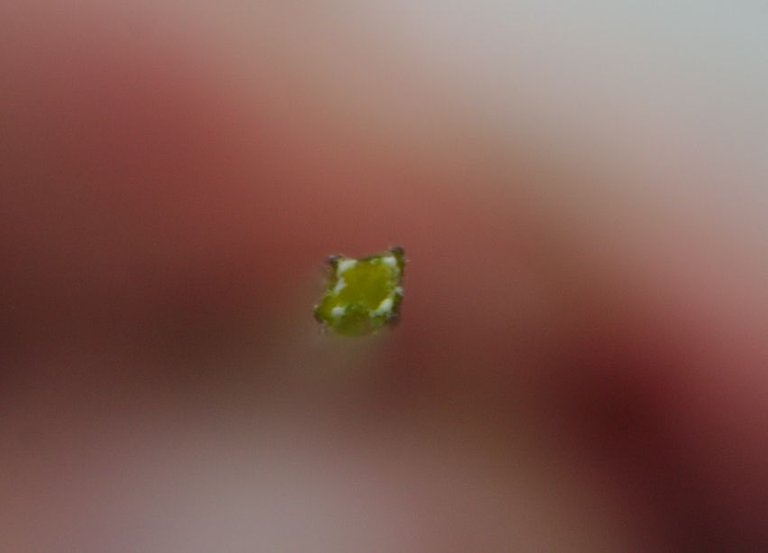
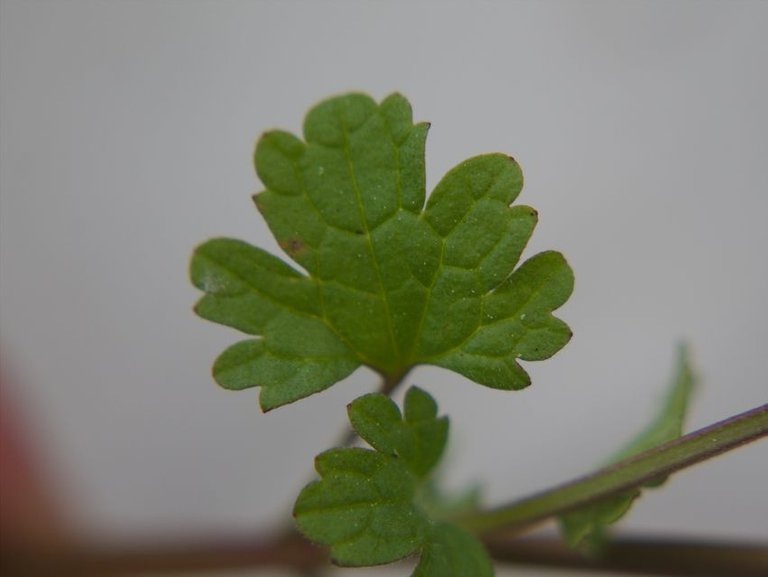

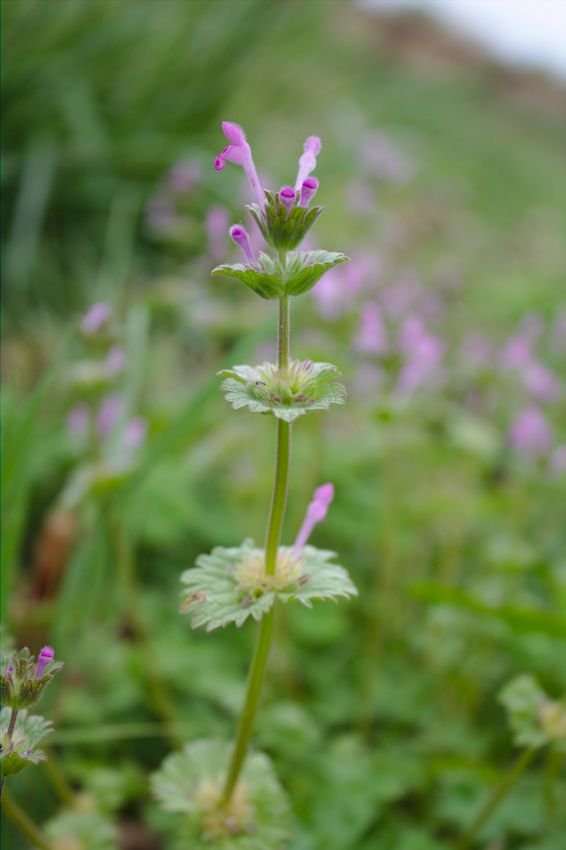
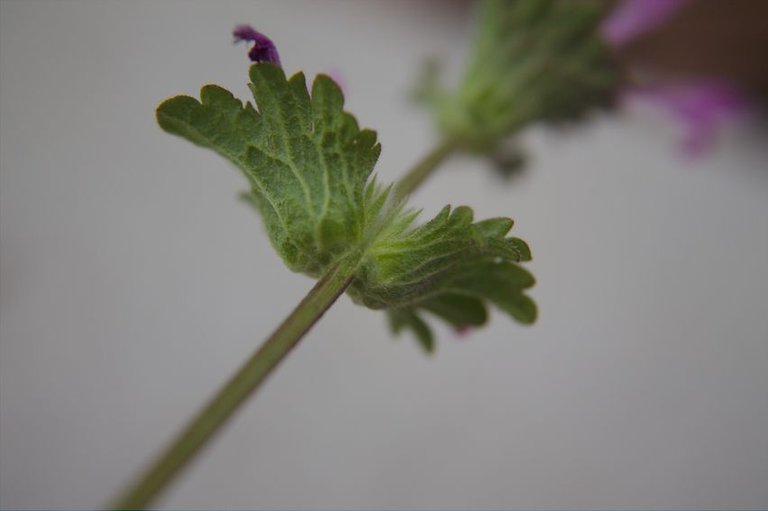
Flowers
Henbit forms tiny whitish pink to lavender or purple flowers in whorls on the upper leaves. The two lipped flowers are a bit orchid-like, with a long, slender tube extending upward from the leaf axil or from the tip of the stem itself. The upper lip terminates in a hood-like shape while the lower lip terminates in two rounded lobes that hang downward.
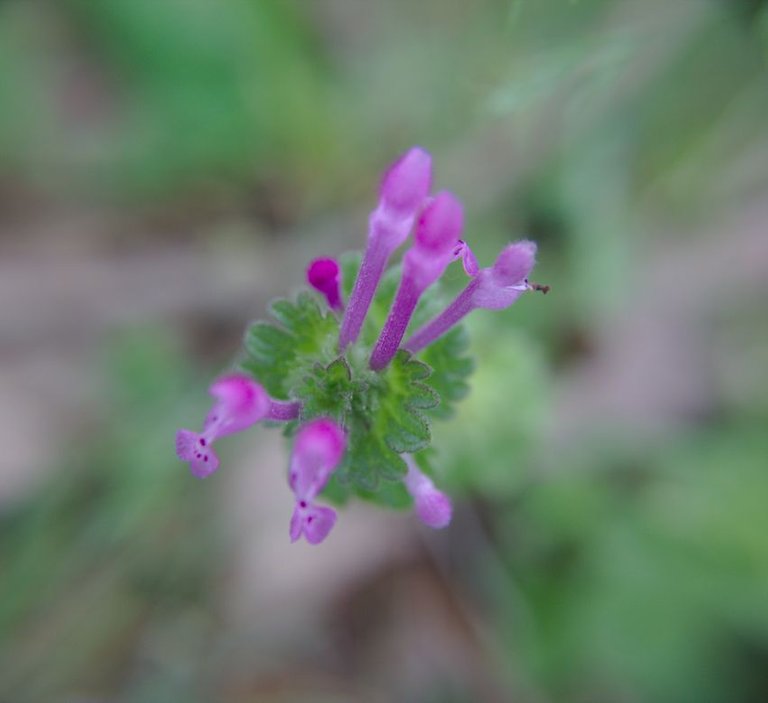 Flowers in a whorl arrangement (Original Image)
Flowers in a whorl arrangement (Original Image)
The top surface of the flower petals are usually whitish with purplish spots and a darker lavender or purple outline. The flowers are covered inside and out with tiny hairs.

After being pollinated, each flower will produce 4 tiny, egg-shaped, nut-like seeds that are brown with white spots. If you’re lucky enough to get to them before they fall to the ground, the seeds can be found neatly tucked away in the calyx of the flower.
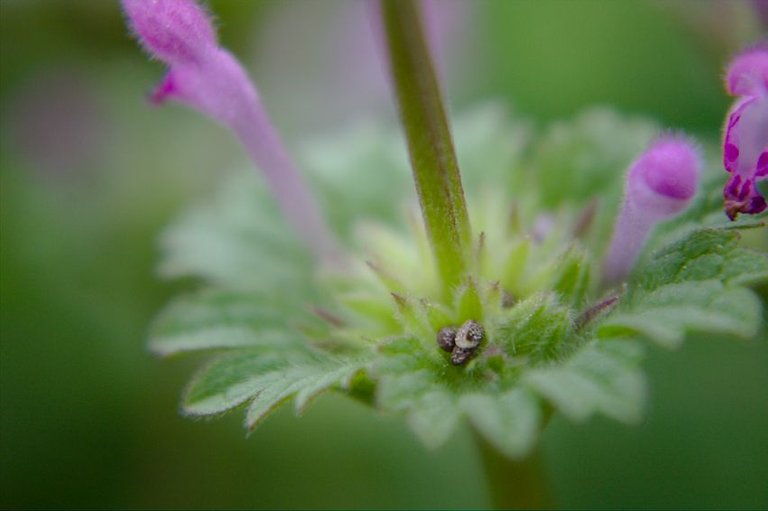
Favored Habitat
Henbit is a cool weather plant, thriving in the early spring. It prefers cool moist areas that have been recently disturbed, and it even does well in shady spots. That is why you are likely to find it growing in your garden or in your lawn in areas where the grass is sparse where it quickly fills in the empty space. Even though each flower on the plant only makes 4 seeds, there are enough of them over the course of the season to produce up to 200 seeds per plant! Furthermore, it can spread by rooting out from the bottom nodes of stems that touch the ground.Purple Dead Nettle (Lamium purpureum)
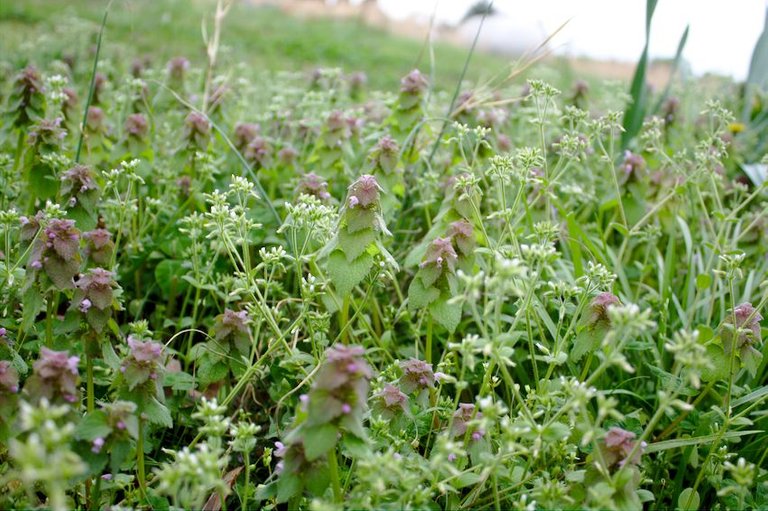
Like henbit, purple dead nettle is in the mint family, so they share many morphological similarities. Like henbit, purple dead nettle is a winter annual, so it also germinates in fall, overwinters, and hits its prime in early spring. For these reasons, it is easy to see why an inexperienced forager would mistake one plant for the other. However, for the astute observer, there are some surefire ways to distinguish these to wild edibles. Let’s examine further.
Stem and Leaves
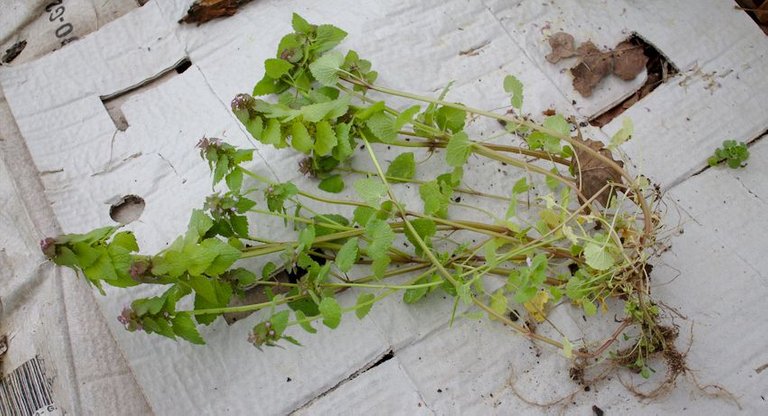
The stem of the purple dead nettle is said to be smooth and has the same square shape as that of henbit. Also like henbit, the stem starts off green in color but often turns more of a purple color as the plant grows. The palmately veined leaves are triangular to heart shaped and have rounded teeth on the edges. Leaves occur in pairs, and all of them are attached to the main stem by a petiole, although the petioles shorten and the leaves get closer together as you go up the stem; so, the top may appear as more of a cluster of leaves. There is also some variation in leaf color as you move up the stem, with the lower leaves being green and the upper leaves having more of a reddish or purplish hue. All of the leaves on the plant tend to be a bit fuzzy.
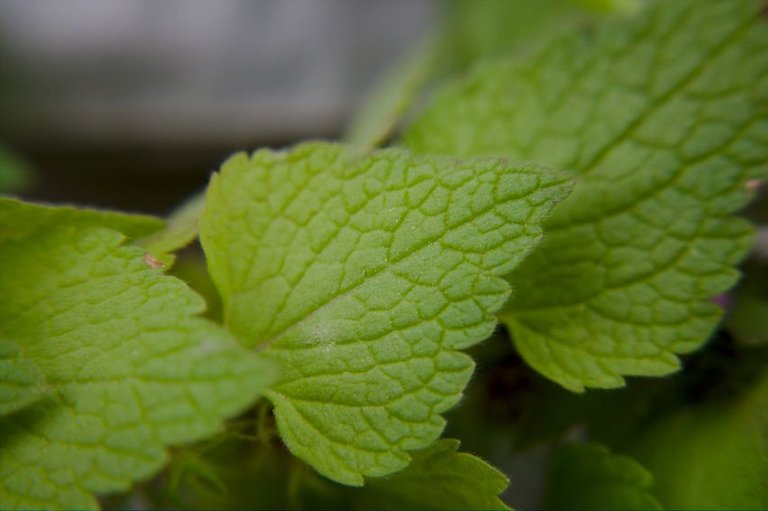
Flowers
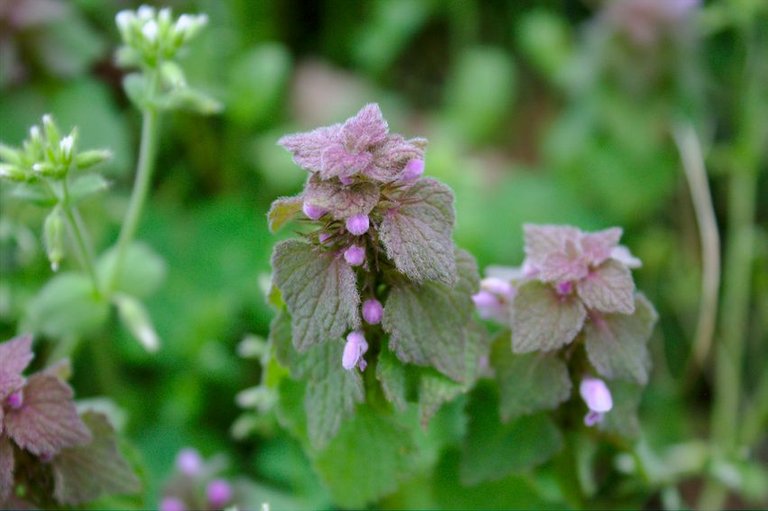
Purple deadnettle flowers look very similar to those on henbit. They are generally whitish pink to purple or lavender and consist of two lips that form a tubular shape before separating into an upper hood and a lower platform consisting of two rounded lobes.
The top surface of the petals is a bit fuzzy and may often be more of a white color with purple spots. Hairs may also be present on veins located on the bottom of the flower petals. Like henbit, each flower on the purple dead nettle will develop nutlets; egg-like in shape and brown with white spots.
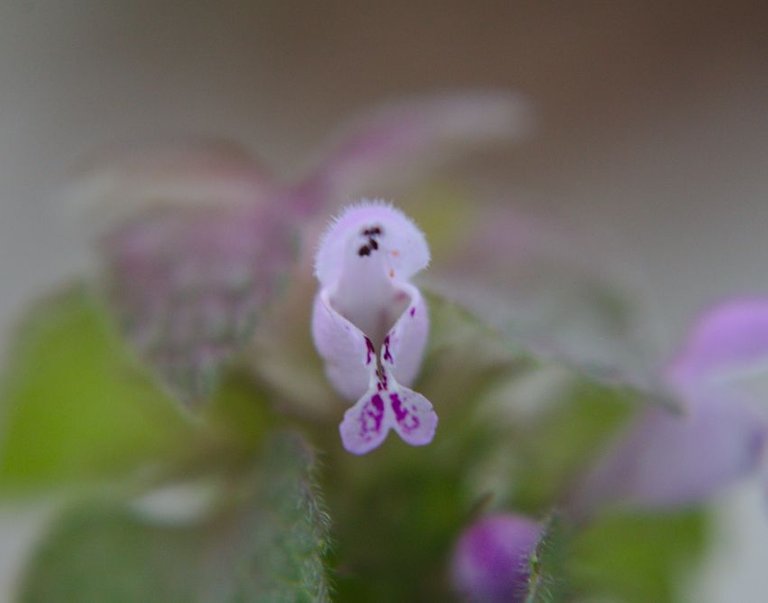
Favored Habitat
Purple dead nettle enjoys the same cool, moist spots that henbit prefers, and they grow at the same time. In fact, it is not uncommon to see them both growing together in the same clump of turf. This is one of the reasons why some folks have a difficult time telling them apart.Side-By-Side Comparison
So to recap, let’s do a quick side-by-side comparison of these two plants and get a good visual of how we can tell them apart.For henbit and purple dead nettle, the key is in the leaves.
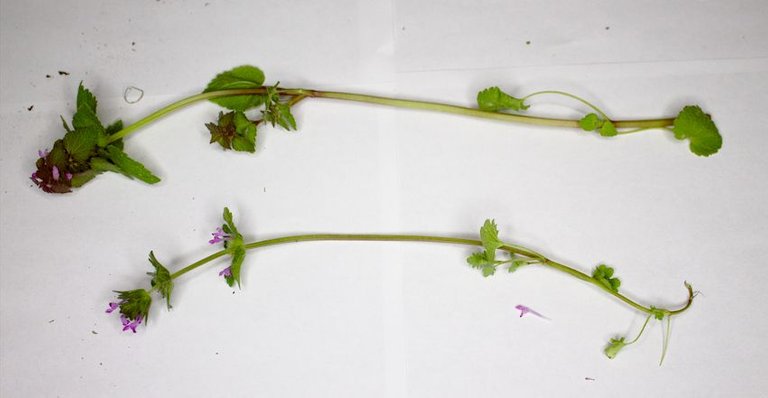
Notice how the leaves of henbit are green all the way up the stem, whereas the leaves of purple dead nettle begin to turn a reddish purple near the top of the plant.

Also notice the general shape of the leaves. Both plants have slightly fuzzy leaves with rounded teeth on the edges. But, note that henbit’s leaves are a little more rounded or maybe kidney shaped where the leaves of purple dead nettle are more triangular or heart shaped.
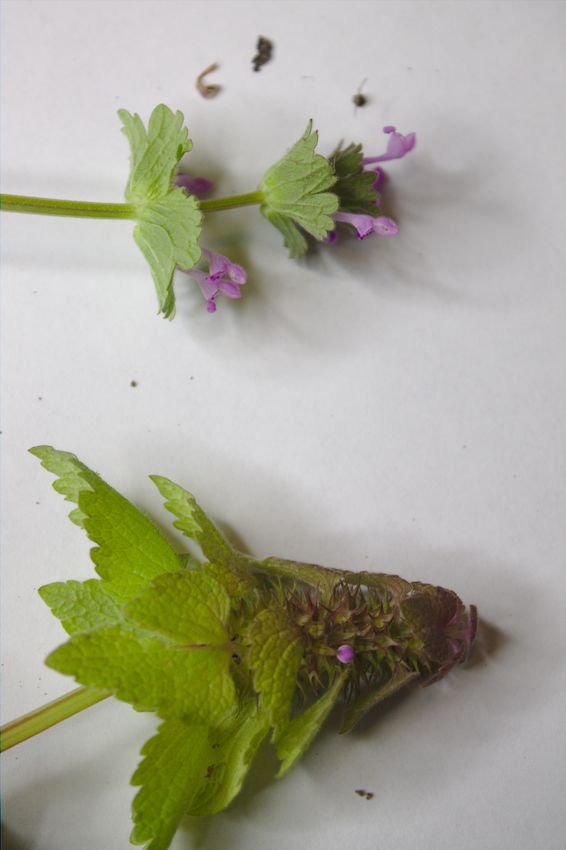
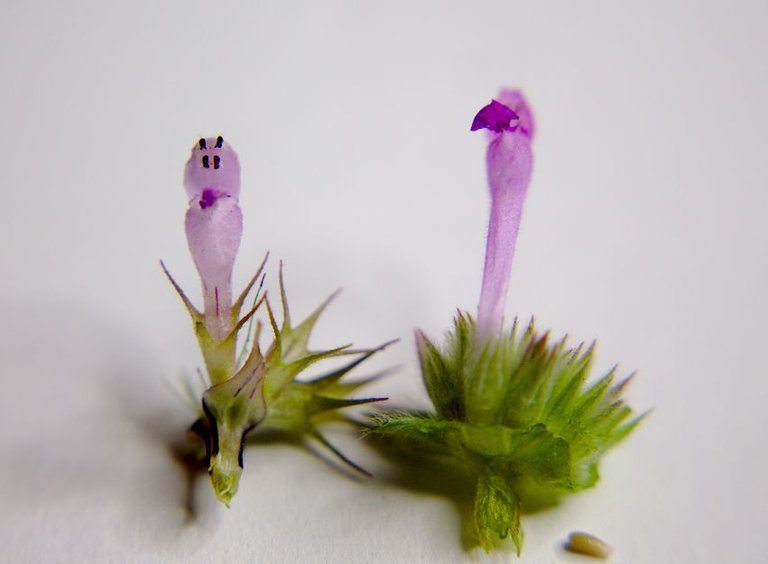
There is also a slight difference in the flowers of the two plants. Notice how the henbit flower has a longer tube extending up from the calyx than purple dead nettle does. I examined lots of specimen growing in different areas of my yard and found this difference across the board.
Finally, pay attention to how the leaves attach to the main stem. For henbit, the lower leaves attach to the main stem by smaller stem-like petioles. As you move up the stem, the nodes where the leaves attach get closer together, and the petioles get shorter. Eventually, it gets to the point where the leaves lose the petiole and begin attaching directly to the stem. In fact, the two opposite leaves may wrap around the stem to the point where they appear as one single leaf.
For purple dead nettle, all of the leaves will attach to the main stem by a petiole. The nodes where the leaves attach still get closer together as you move up the stem, and the petioles do get shorter. In fact, at the very top of the stem, the leaves are close enough together and the petioles are short enough that it looks like one big cluster of leaves. Also note the purplish tint to the leaves as you near the top of the plant.
One final note, and this is just a personal observation- I didn't notice where it mentioned this anywhere in my research- but, it seemed to me that purple dead nettle has the capacity to grow quite a bit larger than henbit (as illustrated in the picture below). Most of the purple dead nettle I had growing in my yard was about the size of the specimen in the image, while the henbit specimen was the largest that I could find growing. Perhaps it's just that the henbit I have growing is younger than the purple dead nettle, but I suspect that it just doesn't grow to be as robust as its cousin. If anyone out there with experience with these plants has any input, I would love to hear what you think.
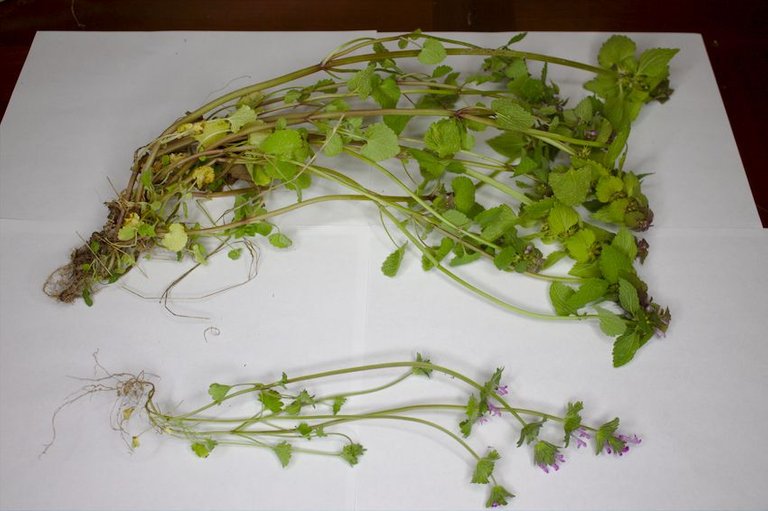
Now, Get Out There!
If you are new to wild foraging for edibles and medicinals, these two plants are a great place to start! But, before getting out there into the woods, or even your own backyard, be sure to consult a local expert who can help you learn about what is edible and (more importantly) what is not edible in your area.Resources
http://identifythatplant.com/three-easily-mixed-up-early-spring-plants/
https://hgic.clemson.edu/factsheet/henbit/
https://www.ediblewildfood.com/henbit.aspx
http://woodyplantstutorial.nres.illinois.edu/venation/ven-palmate.html
https://plants.ces.ncsu.edu/plants/lamium-amplexicaule/
https://hort.extension.wisc.edu/articles/henbit-lamium-amplexicaule/
https://plantscience.psu.edu/outreach/plant-id/broadleaf/henbit
https://www.canr.msu.edu/resources/henbit-lamium-amplexicaule
https://extension.tennessee.edu/publications/Documents/W165.pdf
https://www.illinoiswildflowers.info/weeds/plants/pp_deadnettle.htm
https://plants.ces.ncsu.edu/plants/lamium-purpureum/
https://www.ediblewildfood.com/purple-deadnettle.aspx
https://www.growforagecookferment.com/foraging-purple-dead-nettle/
https://extension.tennessee.edu/publications/Documents/W165.pdf
They remind me of Ground Ivy (Glechoma hederacea), which is also edible and from the same family.
We appreciate your work and your post has been manually curated by @redheadpei on behalf of Amazing Nature Community. It will be added to the weekly botany curation post. Keep up the good work!
Great explanatory post! .. The flowers looks really beautiful on this one. Thank you for this great identifications ^^
Beautiful explanation and identification ! Keep that good work
We appreciate your work and your post was manually curated by @adalger from the DNA team!
Reach us on Discord to learn more about the project!